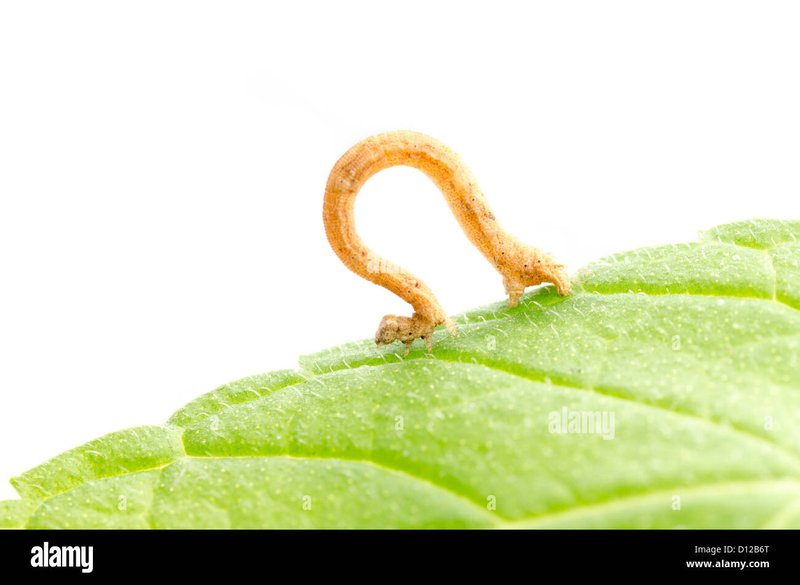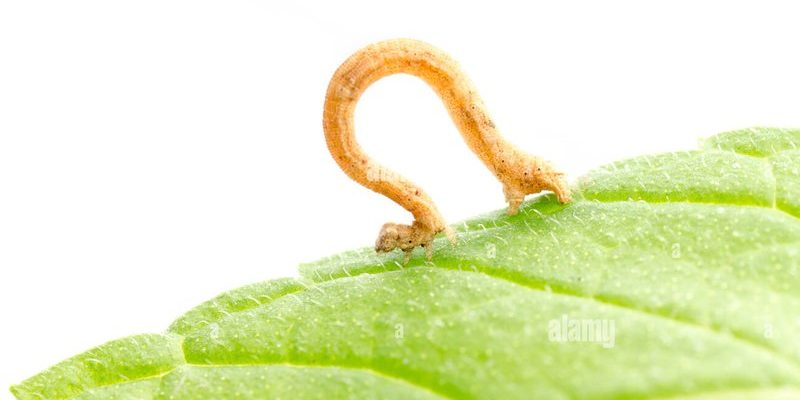
Imagine inchworms and loopers as the quirky dancers of the caterpillar world. Inchworms move with a unique “measuring” step, inching their way forward. Loopers, on the other hand, are like those folks who can’t help but “loop” their way around, pulling themselves forward in a more exaggerated motion. Let’s break down these fascinating little guys and see how they differ from each other!
What Are Inchworms?
Inchworms are the larval stage of certain moths, typically belonging to the Geometridae family. Their name comes from their unique way of moving, which truly resembles the action of measuring an inch. When you see one inching along, it’s like watching a tiny tape measure in action. They curl their bodies into a loop and then extend, giving them their characteristic gait.
Visually, inchworms can vary in color. You might spot them in shades of green, brown, or even some with striking patterns. They tend to blend in well with their surroundings, making them less visible to predators. This camouflage is a nifty survival tactic, allowing them to munch on leaves without drawing too much attention.
You might be wondering where you can find inchworms. They tend to hang out in trees, shrubs, and gardens, where they feast on a variety of plants. While they’re busy munching away, they can sometimes become a nuisance, especially for gardeners hoping to keep their foliage intact.
What Are Loopers?
Loopers, like inchworms, are also caterpillars, but they belong to different families, primarily the Noctuidae. The most recognized characteristic of loopers is their distinct looping motion. Instead of inching forward like their inchworm counterparts, they move by pulling their hind ends toward their front, creating a loop shape. It’s almost like they’re trying to impress with their dance moves!
In terms of appearance, loopers can also come in various colors, including green, yellow, and brown. Some may have stripes or markings that help them blend into their environment. Interestingly, loopers can be a bit more active than inchworms, often making them easier to spot, especially when they’re feeding.
When it comes to their diet, loopers aren’t picky eaters; they enjoy munching on a wide range of plants, including vegetables and ornamental plants. This can make them a challenge for gardeners, just like inchworms.
How to Identify Inchworms vs. Loopers
Spotting the differences between inchworms and loopers can be tricky, but there are some telltale signs. Here are a few key traits to help you recognize each type of caterpillar:
- Movement: As mentioned, inchworms move by curling and straightening. Loopers, in contrast, pull themselves into a “C” shape as they crawl.
- Body Shape: Inchworms usually have a more elongated and slender body, while loopers tend to be chunkier and have a more defined shape.
- Color Patterns: Both types can vary in color, but inchworms often have patterns that help them blend in with leaves. Loopers might have brighter stripes or colors that stand out more.
- Feeding Habits: Inchworms tend to be more solitary, while loopers can be found in groups, especially when they’re feeding on the same plant.
Understanding these differences can help you decide how to manage these caterpillars in your garden.
Why Should You Care About Inchworms and Loopers?
You might be asking, “Why does it matter whether I have inchworms or loopers?” The truth is, both of these caterpillars play important roles in the ecosystem. They’re part of the food chain, providing sustenance for birds and other predators. Plus, they help with pollination as adults when they metamorphose into moths.
However, if you’re a gardener, you might have a love-hate relationship with these little guys. While they contribute to the ecosystem, they can also wreak havoc on your plants. Identifying which type you’re dealing with can be crucial for pest management. For example, if you notice more loopers, you might need to take action sooner, as they tend to feed more aggressively.
How to Control Inchworms and Loopers in Your Garden
If you find that inchworms or loopers are causing trouble in your garden, don’t fret! There are several ways to control their populations without resorting to harsh chemicals.
- Manual Removal: If you spot them early, picking them off by hand can be effective. Just be sure to check the undersides of leaves!
- Natural Predators: Encourage birds and beneficial insects like ladybugs to visit your garden. They’ll help keep inchworm and looper numbers down naturally.
- Insecticidal Soaps: These can be effective in controlling caterpillar populations without harming beneficial insects. Just be sure to follow the instructions carefully.
- Neem Oil: This is another natural option that disrupts the growth and feeding patterns of caterpillars, making it harder for them to thrive.
By employing these tactics, you can create a more balanced garden environment that works for you and the local wildlife.
Inchworms and loopers may look similar at first glance, but they have their quirks that make them unique. From their distinct movements to their roles in the ecosystem, understanding the differences can help you appreciate them more—and protect your garden when necessary. Next time you spot one of these little caterpillars, you’ll know exactly what you’re looking at and how to handle it.
So, the next time you’re sipping your coffee and observing the little life around you, remember that these inching or looping creatures bring a world of wonder to your garden!

